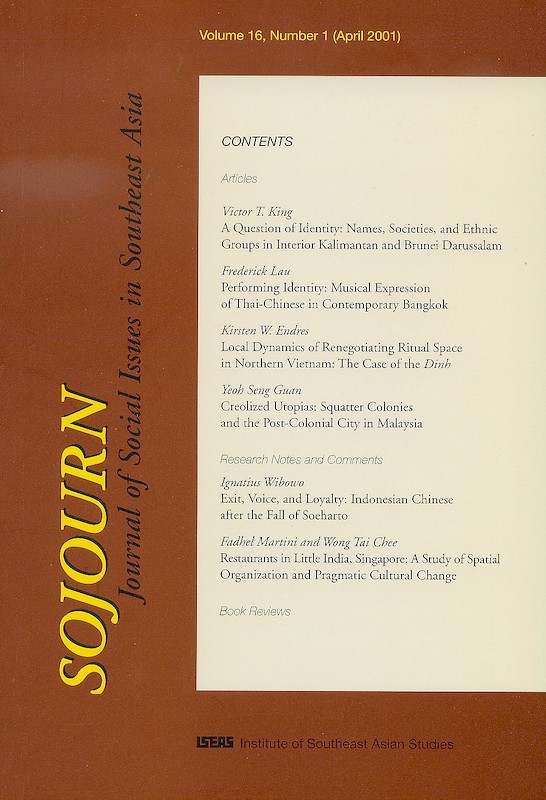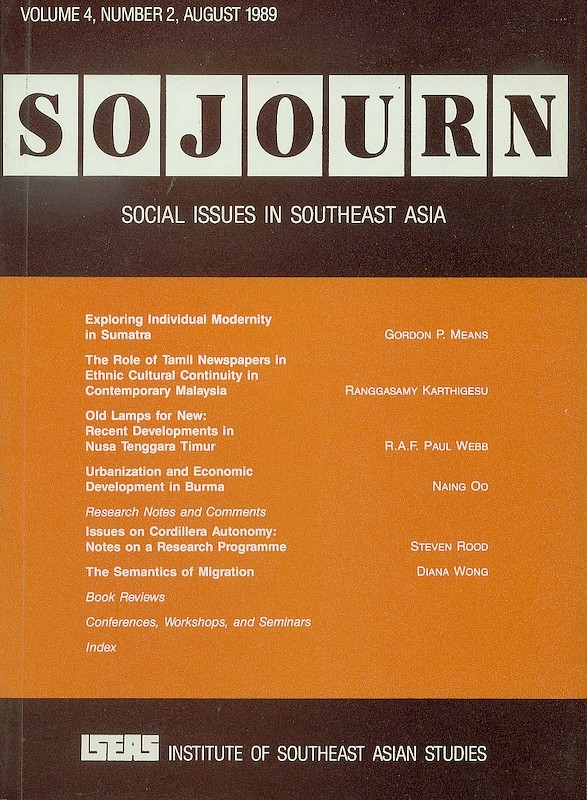SOJOURN: Journal of Social Issues in Southeast Asia Vol. 11/1 (Apr 1996)

Date of publication:
April 1996
Publisher:
Institute of Southeast Asian Studies
Number of pages:
181
Code:
SJ11/1
Contents
-
Preliminary pages
-
The Appeal of Plantation Labour: Economic Imperatives and Cultural Considerations among Javanese Workers in North Sumatra, by Sjafri Sairin, contributor see abstractThe paper discusses the economic life of plantation workers in north Sumatra. The workers under consideration are Javanese, descendants of the early plantation workers. While they receive subsistence wages, work on the plantation is nonetheless considered attractive. The main reasons for this are the sense of security that comes with permanent employment and the benefits of a rice ration and housing, which are crucial supplements to wages. The concept of tentrem (security) is used by the workers to express the sense of peace that comes with plantation work, and as an explanation for their remaining on the plantation.
-
Urbanization, Migration, and Vietnam¹s Spatial Structure, by Dean Forbes, contributor
-
Urbanization and the Structure of Urban Employment in Indonesia, by Sukamdi, contributor see abstractThe article examines urbanization and the structure of urban unemployment in Indonesia by using the 1992 national labour force survey (1992 SAKERDA) data on regional labour force. Special attention is given to analysing the nature of urban employment below the provincial level. In the 1961Â71 period, natural increase was the primary factor of urban growth. Since then, dramatic migration has contributed to high levels of unemployment and underemployment in the cities. Notably, urban unemployment tends to be lower in highly urbanized areas with modern industries. However, some municipalities exhibit a high labour absorption in manufacturing as well as a high level of underemployment. The study analyses this phenomenon and concludes that in some circumstances, the manufacturing sector itself is not a solution to urban underemployment.
-
Vietnam's Policies and the Ethnic Chinese since 1975, by Ramses Amer, contributor see abstractThe study examines Vietnam1s policies towards the ethnic Chinese since 1975. Patterns of Chinese migration from Vietnam are studied in order to explain the exodus of 1978-79. It is suggested that the economic policies of socialist transformation during the second half of the 1970s contributed to the outflow of ethnic Chinese from the South. In the North deteriorating relations between China and Vietnam constituted the main reason for the massive emigration of ethnic Chinese. These two factors and discriminatory policies brought about the 3boat people2 crisis from late-1978 to mid-1979. Current economic reform and a gradual shift towards a policy of re-integration since 1982 have created better conditions for the Chinese community, thus reducing the incentive to leave Vietnam.
-
Population Growth and the Changing Ecosystem in Mindanao, by Federico V Magdalena, contributor see abstractThis paper explores the relation between population growth and the changing ecosystem in Mindanao, the Philippines. The history of population growth in Mindanao can be traced back to 1913 when the American colonial government set up agricultural colonies to open up the south for trade and development. Colonial settlement together with migration and natural increase resulted in resource degradation and displacement of indigenous communities such as the Moros and Lumads. Another pressure on the environment comes from legal and illegal logging and rampant kaingin (swidden) agriculture. The paper concludes with a discussion of possible maintenance and rehabilitation of the ecosystem.
-
Trading Networks of Chinese Entrepreneurs in Singapore, by Thomas Menkhoff, Chalmer E Labig, contributors see abstractThe entrenchment of entrepreneurs in local, regional, or global business networks based on kinship, clanship, territorial, or ethnic ties has often been cited as characteristic of Chinese business communities in Southeast Asia. Qualitative interviews with Singaporean Chinese merchant-exporters were conducted in order to examine this thesis. The findings reveal that there is a strong tendency among Chinese entrepreneurs in Singapore to rely on external commercial relationships with ³outsiders² and ³friends² rather with those related by blood or marriage. It is suggested that kinship reciprocity may under some circumstances curb the autonomy and freedom of the transacting actors, thus limiting their abilities to make decisions in the regional and international market-places.
-
Hunting for Gender in the Forests of Borneo: Reflections on a New Monograph Series for Borneo Research, by Penelope Graham, contributor see abstractThis note draws attention to a number of significant initiatives undertaken by the Borneo Research Council, especially those aimed at broader dissemination of the results of Borneo research and greater Southeast Asian involvement in Council conferences. It goes on to discuss in some detail the initial volume, entitled Female and Male in Borneo: Contributions and Challenges to Gender Studies, in the Borneo Research Council¹s recently established monograph series. In reviewing the scope of this volume, the note considers a range of arguments put forward in some of the contributions, notably those dealing with Rungus Dusun sex roles and human sexuality, Iban head-hunting and gender differentiation, Lun Dayeh sociality, European-indigenous miscegenation, and the Bornean penis pin.
-
BOOK REVIEW: Factory Daughters: Gender, Household Dynamics, and Rural Industrialization in Java By Diane Lauren Wolf
-
BOOK REVIEW: Different Women, Different Work: Gender and Industrialisation in Indonesia Edited by Miles Grjins et al., by Fiona Kerlogue, contributor
-
BOOK REVIEW: The Songs of Salanda and Other Stories of Sulu By H Arlo Nimmo, by Carolyn Marr, contributor
-
BOOK REVIEW: Islamic Peasants and the State: The 1908 Anti-Tax Rebellion in West Sumatra By Ken Young, by Henk Schulte Nordholt , contributor
-
Conferences, Workshops, and Seminars

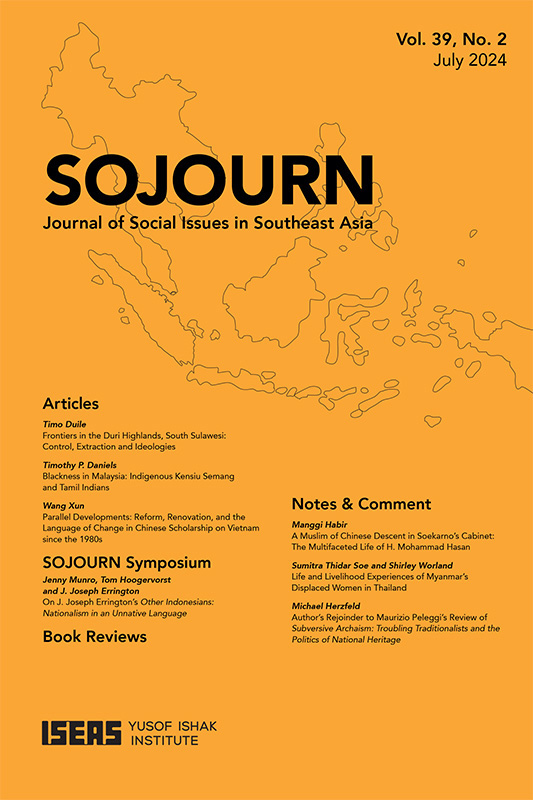
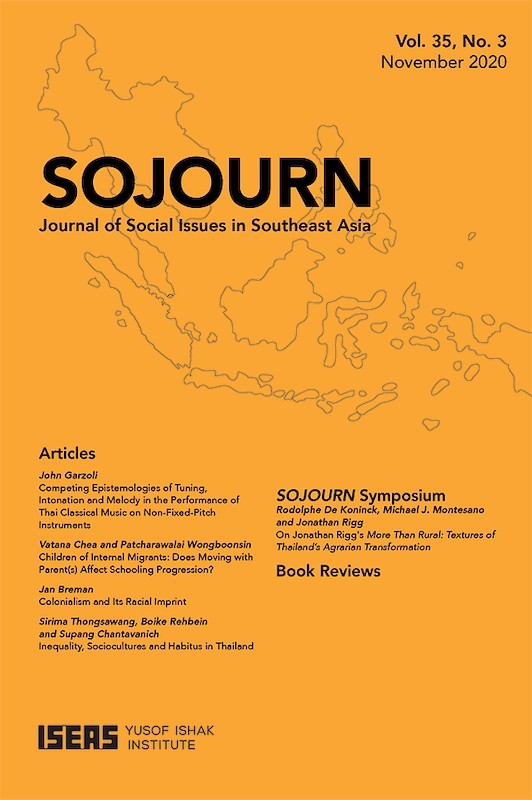
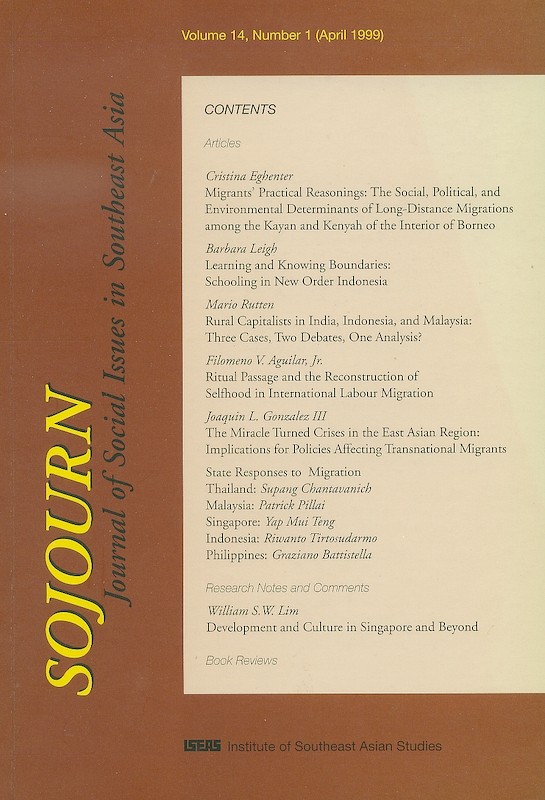
![Journal of Southeast Asian Economies Vol. 30/1 (Apr 2013) [formerly ASEAN Economic Bulletin]](/cover/AE30-1.jpg)
